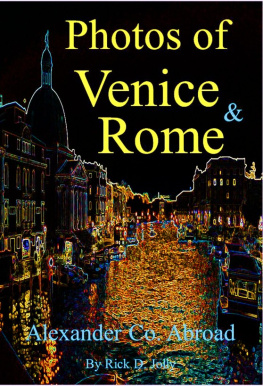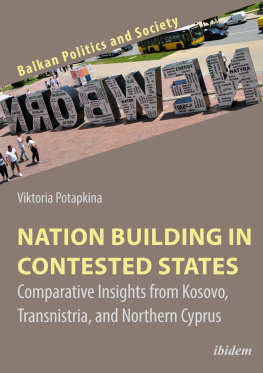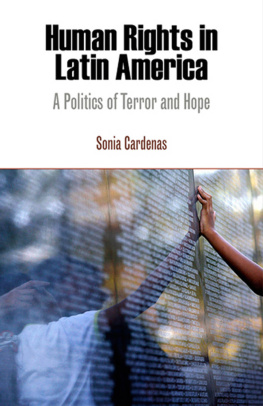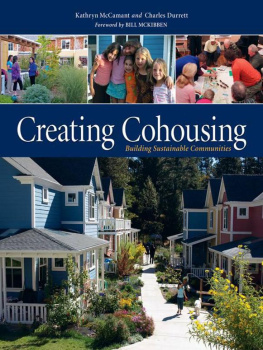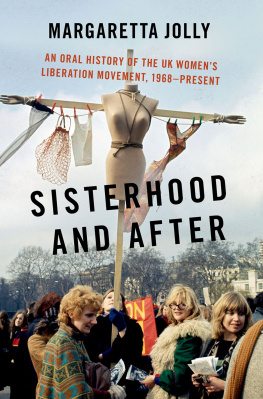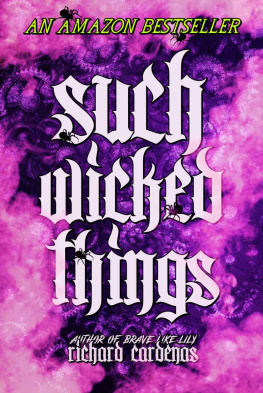Jolly - Creating Pátzcuaro, Creating Mexico: Art, Tourism, and Nation Building under Lázaro Cárdenas
Here you can read online Jolly - Creating Pátzcuaro, Creating Mexico: Art, Tourism, and Nation Building under Lázaro Cárdenas full text of the book (entire story) in english for free. Download pdf and epub, get meaning, cover and reviews about this ebook. year: 2017, publisher: University of Texas Press, genre: Politics. Description of the work, (preface) as well as reviews are available. Best literature library LitArk.com created for fans of good reading and offers a wide selection of genres:
Romance novel
Science fiction
Adventure
Detective
Science
History
Home and family
Prose
Art
Politics
Computer
Non-fiction
Religion
Business
Children
Humor
Choose a favorite category and find really read worthwhile books. Enjoy immersion in the world of imagination, feel the emotions of the characters or learn something new for yourself, make an fascinating discovery.

Creating Pátzcuaro, Creating Mexico: Art, Tourism, and Nation Building under Lázaro Cárdenas: summary, description and annotation
We offer to read an annotation, description, summary or preface (depends on what the author of the book "Creating Pátzcuaro, Creating Mexico: Art, Tourism, and Nation Building under Lázaro Cárdenas" wrote himself). If you haven't found the necessary information about the book — write in the comments, we will try to find it.
Jolly: author's other books
Who wrote Creating Pátzcuaro, Creating Mexico: Art, Tourism, and Nation Building under Lázaro Cárdenas? Find out the surname, the name of the author of the book and a list of all author's works by series.
Creating Pátzcuaro, Creating Mexico: Art, Tourism, and Nation Building under Lázaro Cárdenas — read online for free the complete book (whole text) full work
Below is the text of the book, divided by pages. System saving the place of the last page read, allows you to conveniently read the book "Creating Pátzcuaro, Creating Mexico: Art, Tourism, and Nation Building under Lázaro Cárdenas" online for free, without having to search again every time where you left off. Put a bookmark, and you can go to the page where you finished reading at any time.
Font size:
Interval:
Bookmark:
JOE R. AND TERESA LOZANO LONG SERIES IN LATIN AMERICAN AND LATINO ART AND CULTURE
Creating Ptzcuaro, Creating Mexico
ART, TOURISM, AND NATION BUILDING UNDER LZARO CRDENAS
Jennifer Jolly

UNIVERSITY OF TEXAS PRESS
AUSTIN
Copyright 2018 by the University of Texas Press
All rights reserved
First edition, 2018
Requests for permission to reproduce material from this work should be sent to:
Permissions
University of Texas Press
P.O. Box 7819
Austin, TX 78713-7819
http://utpress.utexas.edu/index.php/rp-form
Library of Congress Cataloging-in-Publication Data
Names: Jolly, Jennifer, author.
Title: Creating Ptzcuaro, creating Mexico : art, tourism, and nation building under Lzaro Crdenas / Jennifer Jolly.
Description: First edition. | Austin : University of Texas Press, 2018. | Includes bibliographical references and index.
Identifiers: LCCN 2017025392
ISBN 978-1-4773-1419-7 (cloth : alk. paper)
ISBN 978-1-4773-1420-3 (pbk. : alk. paper)
ISBN 978-1-4773-1421-0 (library e-book)
ISBN 978-1-4773-1422-7 (non-library e-book)
Subjects: LCSH: Ptzcuaro (Mexico)History. | Crdenas, Lzaro, 18951970. | MexicoPolitics and government19101946. | Politics and cultureMexico. | Culture and tourismMexico.
Classification: LCC F1391.P33 J65 2018 | DDC 972/.37dc23
LC record available at https://lccn.loc.gov/2017025392
doi:10.7560/314197
To Chris, Joey, and Teo
Contents
Acknowledgments
The seed for this project was planted many years ago when friends in Mexico City introduced me to the murals of Ricardo Brcenas ( Week visit were Mexicans. As I learned more, my question as to why there was a concentration of industrial-themed murals in Michoacn was reframed as I realized that Crdenas had chosen Ptzcuaro as a laboratory for the development of a regional, tourism-based economy, using a program that combined radical modernization with a commitment to preserving (reinventing, really) traditional Mexico.
A 2010 FulbrightGarca Robles fellowship allowed me to return to the region with my family for a sustained period of research. I am grateful to the Universidad Michoacana de San Nicols de Hidalgo (UMSNH) and the Facultad de Filosofa for hosting my stay in Morelia, and for the collegial support of Ana Cristina Ramrez Barreto, Adriana Pieda, Catherine Ettinger, Carmen Lpez, Gerardo Snchez Daz, and Guadalupe Chvez, among others, who were all generous with their time and knowledge during my various visits. Ivonne Solano and Teresa Fernndez Martnez at the Centro de Documentacin e Investigacin de las Artes provided invaluable support, information, and resources. Thanks also to the staff at Morelias Hemeroteca, the Instituto de Investigaciones Histricos (IIH) library, and the Archivo General e Histrico del Poder Ejecutivo de Michoacn (AGHPEM), especially Mara Teresa Carmona Len in the Fototeca. I extend special appreciation for the work and hospitality of Sofa Irene Velarde Cruz and to Eduardo Rubio for welcoming me into his home. And I would like to acknowledge the assistance that I received at the Colegio de Michoacn in Zamora, particularly the guidance of Vernica Oikin Solano and Paul Kersey Johnson.
In Ptzcuaro, Enrique El Chino Soto Gonzlez provided invaluable direction, sharing photographs and referring me to local families who could help me piece together my understanding of the regions history. Gloria Blancas Lpez at the Bocanegra Library was always generous with time and information, as were the staffs at the municipal archive, at the Centro de Cooperacin Regional para la Educacin de Adultos en Amrica Latina y el Caribe (CREFAL), and at the Museo de Artes e Industrias Populares. Aida Castilleja Gonzlez was wonderful to talk with; I am especially grateful to her for introducing me to the regions miradores (scenic overlooks) and sharing her insights about their role in unifying the region. Various locals provided information and resources, including the Gonzlez Sern family, Gerardo Daz, Monica Grey, and Miguel Monje. Thank you also to Enrique Garnica Portillo for always helping my family and me feel at home and welcome in Ptzcuaro.
In Mexico City, I am grateful to the numerous individuals at the Universidad Nacional Autnoma de Mxico (UNAM) and the Archivo General de la Nacin (AGN) who facilitated my research. I would particularly like to thank Ernesto Pealoza and Dafne Cruz Porchini for sharing their own research, images, and films with me. I am also grateful for the assistance, suggestions, and time of various scholars, including Alicia Azuela, Renato Gonzlez Mello, Clara Bargellini, Karen Cordero, Tely Duarte, and Hctor Mendoza Vargas. I would also like to acknowledge the long-term work that Leticia Lpez Orozco has done to promote the study of muralism in Mexico.
I offer a special thank you to the family members and students of artists that I have been studying, including Ana Mara de la Cueva, J. J. Gonzlez, Liza Arredondo, and Melchor Peredo. Their stories and the images that they shared helped enrich my understanding of the artists who visited Ptzcuaro. Additional thanks to David Haun and Tracy Novinger for help with images.
A host of scholars have provided invaluable feedback and support along the way. I am grateful for the early support of Alejandro Anreus, Leonard Folgarait, and Robin Greeley as I developed this project. The feedback that I received as I shared this material in various formats has been invaluable. Thus I wish to acknowledge a range of colleagues and friends, including Jordana Dym, Jay Oles, Alexis Salas, Mary Coffey, Rick Lpez, Anna Indych-Lpez, and Barry Carr; my New York State Latin American Workshop (NYSLAW) colleagues and participants, including Nancy Applebaum, Ray Craib, Thomas Rath, and Alan Knight; Kathryn ORourke and Mike Schreyach; and Staci Widdefield and her students and colleagues participating in Arizona State Universitys Water Seminar. I am also grateful for the thorough and thoughtful comments of my readers, Mary Coffey and Jason Ruiz, and the guidance of the editorial staff at the University of Texas Press, Angelica Lopez-Torres, Lynne Chapman, and Kerry Webb.
Ithaca College has provided support for this project at key moments, including a 2009 Summer Research Grant and support for image rights. I would also like to acknowledge Lauren OConnell, Jennifer Germann, Jonathan Ablard, Annette Levine, Patricia Rodrguez, Paul Wilson, Nancy Brcak, and Gary Wells for the guidance, feedback, and support that made writing this book possible, as well as my student assistant Gabriella Jorio. Thank you also to my department and Dean Leslie Lewis for making it possible for me to take a leave to write much of this book when I received a 2013 National Endowment for the Humanities Research Fellowship.
I could not have seen this project through without the support of my family. From helping herd three-year-old twins around Ptzcuaro, Morelia, and Ithaca while I was visiting archives to providing moral support and sharp ears along the way, thanks go to George Jolly, Caroline Seligman, Jay Rogoff, and Coral Crosman. Special thanks go to my mother Penny Jolly, whose mentorship during my career as an art historian has been invaluable. To Chris Gonzales, I can say thank you for your patience and supportit has been wonderful having you at my side during the various adventures that accompanied the research and writing of this book. And all my love to Joey and Teo, whose fascination with Los Viejitos dance and places like Janitzio helped me see the world of tourism with fresh eyes.
Introduction
Residents of Ptzcuaro in Michoacn still claim that this piece of western Mexico might have become Mexicos capital, if the Purpecha Indians hadnt thrown rocks to scare away the migrating Aztecs prophesied omen: an eagle alighting on a cactus, destined to indicate where the Aztecs should settle. foundations of modern Mexico.
Next pageFont size:
Interval:
Bookmark:
Similar books «Creating Pátzcuaro, Creating Mexico: Art, Tourism, and Nation Building under Lázaro Cárdenas»
Look at similar books to Creating Pátzcuaro, Creating Mexico: Art, Tourism, and Nation Building under Lázaro Cárdenas. We have selected literature similar in name and meaning in the hope of providing readers with more options to find new, interesting, not yet read works.
Discussion, reviews of the book Creating Pátzcuaro, Creating Mexico: Art, Tourism, and Nation Building under Lázaro Cárdenas and just readers' own opinions. Leave your comments, write what you think about the work, its meaning or the main characters. Specify what exactly you liked and what you didn't like, and why you think so.



